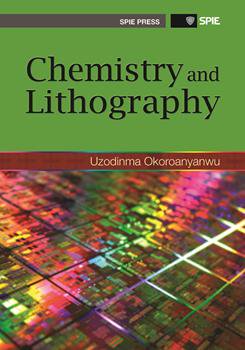|
Shrinking integrated circuit devices, fueled by the need to increase device speed and density, are approaching dimensions that are considerably smaller than the practical resolution limit of conventional lithography. A number of advanced resist-processing schemes have been proposed to accommodate the resolution requirements for IC devices at such extremely small technology nodes. The 32-nm and sub-32-nm technology nodes are particularly affected. Lithographic resolution patterning of the IC device features at these nodes is extremely difficult because of the mask error enhancement factor (MEEF), which increases as k1 decreases. In addition, aspect ratio considerations, dependent on mechanical stability and pattern collapse propensity of resist lines, limit the thickness of resists designed for these technology nodes to ultrathin resist thickness regimes (~100 nm and lower). However, the aspect ratio considerations must be balanced against the etch stability requirements that ensure successful pattern transfer to underlying substrates in a device. Both the aspect ratio and etch stability requirements must be balanced against the intrinsic resolution, particularly pitch resolution, of the resist in question. Hence, there is a trade-off between aspect ratio requirements and etch stability requirements on the one hand, and pitch resolution on the other. Therein lies the motivation for these advanced resist-processing schemes. Another type of balance that is struck in resist design for these advanced technology nodes concerns the trade-off between resolution, line edge roughness, and sensitivity. Empirical evidence shows that it is extremely difficult to simultaneously meet the 2008 ITRS-specified recommendations for these three resist metrics in EUV lithography. How the balance between the above-named requirements are struck in each of the major advanced resist-processing schemes in use today is discussed below, along with the advantages and drawbacks of each technique. In particular, we discuss the material basis of the resolution limit issues of resists, especially as they concern those based on chemical amplification systems, since these constitute the majority of resists in use in advanced lithographic processing today. |
|
|


